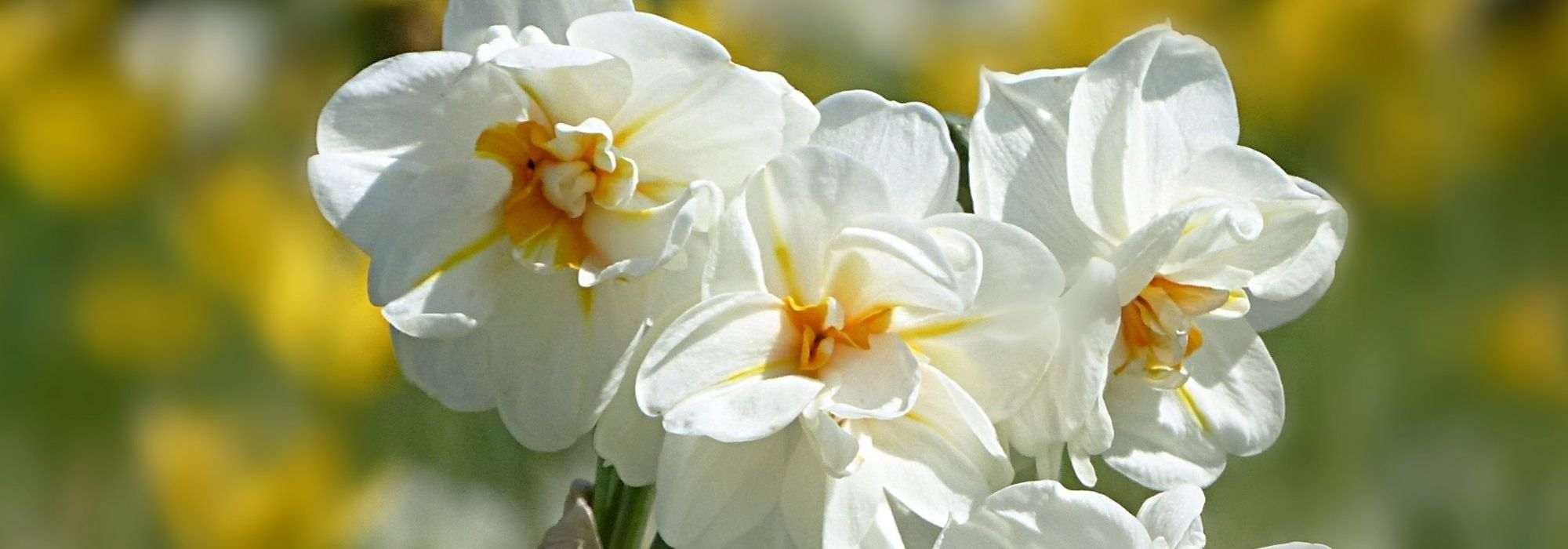
6 highly scented varieties of Narcissus
Our selection of the most fragrant daffodils to add to your garden
Contents
Daffodils are undemanding bulb plants, easy to grow and hardy. These flowers combine aesthetics and olfactory pleasure: in addition to the beautiful range of colours they offer, some varieties of daffodils are incredibly fragrant.
Poet’s narcissus or the ‘Paperwhite’ variety are generally among the best known, but other daffodils are equally beautiful and fragrant.
Here is a selection of 6 varieties of daffodils with powerful, perfumed fragrances, to grow in pots, rockeries, borders or simply on a short grass meadow for a lovely natural effect.
→ Also discover our full guide to Daffodils and jonquils
Narcissus ‘Bella Estrella’: deliciously fragrant bicolour flowers
Characteristics of daffodil ‘Bella Estrella’
daffodil ‘Bella Estrella’ or ‘Belle Etoile’ is a scented daffodil with long stems reaching 40 cm.
This variety offers a long and abundant flowering from April to May. The daffodil then displays bicolour flowers of 5 cm: delicate white petals reveal a pretty pale yellow undulating, split trumpet. The scent is powerful and floral.
Its strengths :
- variety particularly tolerant of drought and heat
- long flowering, for at least 3 weeks
- hardy below -15°C
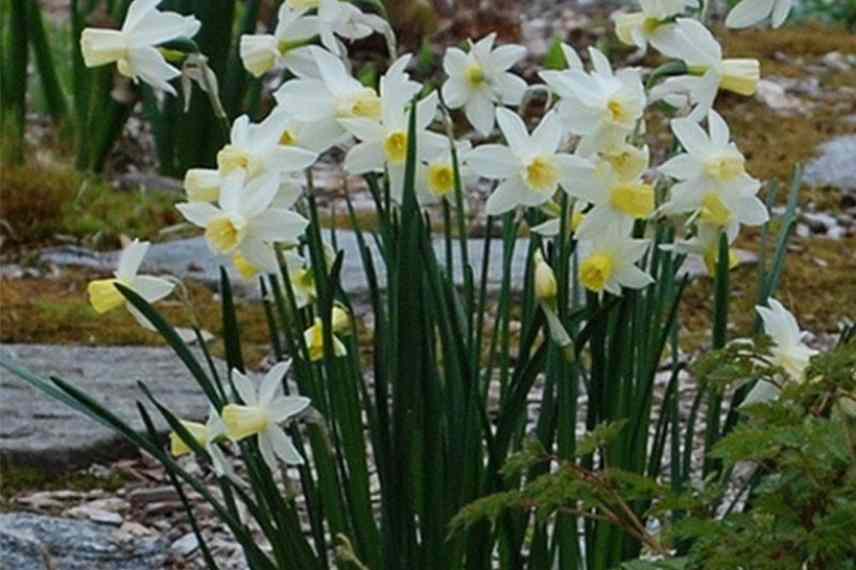
Planting and pairing daffodil ‘Bella Estrella’
Daffodil ‘Bella Estrella’ is perfect grown both in a spring container display and planted in the ground.
In a window box or pot, place it near walkways or on a windowsill to best enjoy its fragrance. It is also a flower much used for cut bouquets.
For a romantic feel in the garden, pair this daffodil in beds or along paths with other daffodils with white petals, such as ‘Sophie Girl’ with its sublime salmon-pink trumpet or ‘Dreamlight’ and its delicate flared crown with pink edging. ‘Bella Estrella’ also brings a delicate touch at the base of an old rose.
Finally, for a more colourful touch, pair this daffodil with early tulips that will show it off well, such as the bicolour ‘Cape Town’ with its magnificent bright yellow and red flowers.
Narcissus 'Martinette': one of the most fragrant, with brilliant flowering
Characteristics of Narcissus ‘Martinette’
Narcissus jonquilla ‘Martinette’ is one of the most fragrant varieties, reaching 40 cm in height at ripeness.
Flowers in March and April, with 4 to 5 flowers per stem gathered like small bouquets. In terms of colour, bright yellow petals contrast with a vivid orange trumpet centre. A true sun in the garden!
Its strengths :
- adapted to hot, dry climates in summer
- abundant early flowering
- naturalises easily
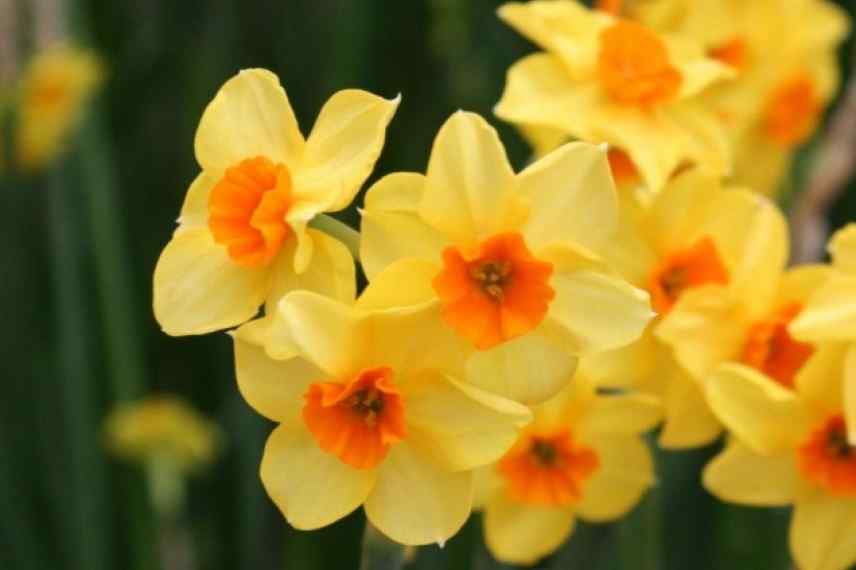
Planting and pairing Narcissus ‘Martinette’
Undemanding, Narcissus ‘Martinette’ thrives both in full sun and in woodland.
It is best showcased when combined with other flowers in yellow or orange tones, such as tulip ‘Triomphe Cairo’, with its original coppery‑orange blooms or, for a wilder touch, the rarer but magnificent botanical tulip vvedenskyi with red petals and yellow centre. Together they will create a truly vibrant splash of colour and brighten meadow, rockeries or even the bases of deciduous trees.
Discover other Narcissi - Daffodils
View all →Available in 1 sizes
Available in 1 sizes
Available in 1 sizes
Available in 1 sizes
Available in 1 sizes
Available in 1 sizes
Available in 1 sizes
Available in 1 sizes
Available in 1 sizes
Available in 1 sizes
Narcissus 'Avalanche': an old variety with a musky scent
Characteristics of narcissus ‘Avalanche’
narcissus tazetta ‘Avalanche’ is a robust variety, highly prized for its musky fragrance.
From late March in regions with mild winters, its long stems of 50 cm reveal a bouquet of several charming small bicoloured flowers. Their corolla of pure white petals surrounds an undulating yellow coronule.
Its advantages :
- virus-resistant variety
- beautiful inflorescences grouped in clusters
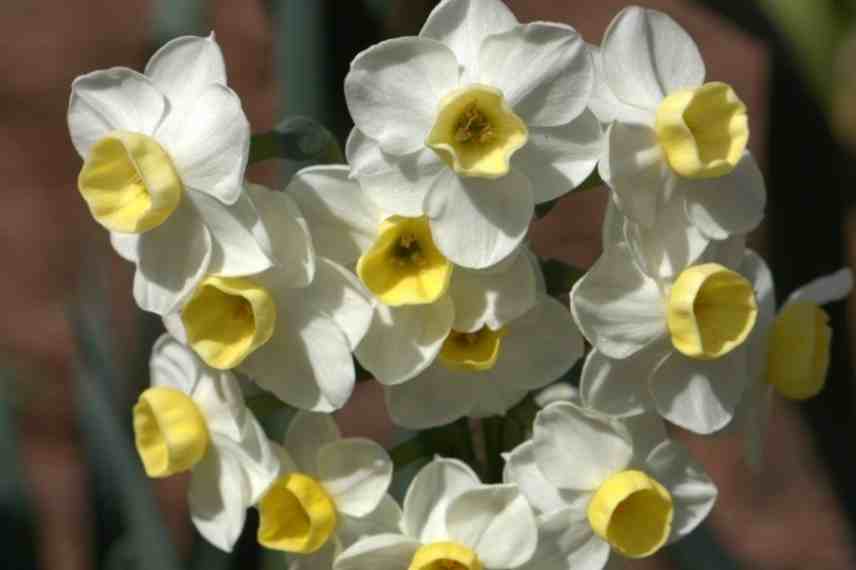
Planting and combining narcissus ‘Avalanche’
Its natural look is perfect to give a slightly wilder, less formal feel to a short grass meadow.
Narcissus ‘Avalanche’ should be planted randomly for a spontaneous effect, combined with other bulbous plants such as white muscari or blue-violet muscari, or with perennials such as Fritillaria pallidiflora with pale yellow bell-shaped flowers or Fritillaria meleagris with striking purple checkered bells.
At edge of bed or at base of trees, to create a pretty coloured tapetum, it can be combined with Caucasian forget-me-not ‘Brunnera sibirica’, with beautiful spreading green foliage and pale blue flowers, or with pansies or primroses.
Narcissus 'Bridal Crown': an essential scented double flowering
Characteristics of Narcissus ‘Bridal Crown’
Narcissus tazetta ‘Bridal Crown’ remains a prized variety for its fragrant qualities. Early-flowering, it blooms from March through April releasing a delightful fragrance.
Each stem of 35 cm produces several double flowers 4 cm in diameter, with numerous cream-white petals giving a crinkled effect. The centre reveals very bright yellow-orange tones.
Its advantages :
- early variety
- very floriferous
- award-winning variety for its performance in England

Planting and companion planting of Narcissus ‘Bridal Crown’
Narcissus ‘Bridal Crown’ is ideal for flowering pots, alone or paired with other daffodils or even with hyacinths. Bulbs can be planted either in separate containers or together, burying bulbs at different depths according to plants’ height at ripeness.
In borders or rockeries, it can be accompanied by anemones, such as anemone blanda ‘Blue Shades’ which will set off their vivid blue flowers, or anemone blanda ‘White Splendour’ with its white flowers and yellow centres, for attractive uniformity of tones.
Narcissus 'Rose of May': flower and fragrance reminiscent of gardenia
Characteristics of Narcissus ‘Rose of May’
Narcissus ‘Rose of May’ is an old, later-blooming variety, flowering in May.
Its double white or ivory 5 cm flowers have a turbinate centre, reminiscent of gardenia flowers.
Its sweet scent is unmistakable after a sunny May afternoon.
Key characteristics :
- atypical flowers
- late flowering, after narcissus season
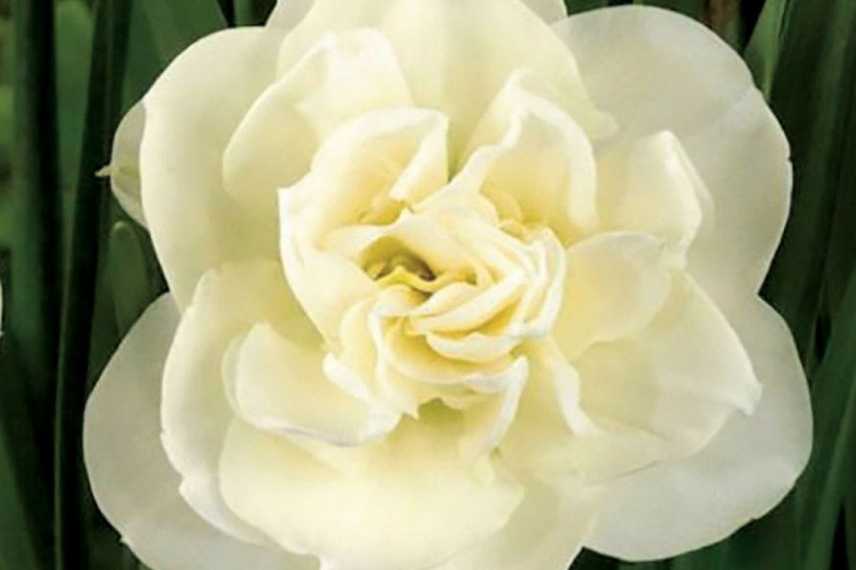
Planting and pairing Narcissus ‘Rose of May’
Beautiful flowers of Narcissus ‘Rose of May’ are ideal for bouquets, adding a delicate, refined touch indoors.
For a white, scented combination, they can be paired with hyacinths, such as Hyacinth ‘Carnegie’ with spikes of star-shaped flowers or Hyacinth ‘City of Harleem’ with cream-yellow flower spikes.
For a more colourful, natural-looking border, combine with scillas, such as pink campanulate scilla with bell-shaped flowers in soft pastel pink or Scilla litardierei with star-shaped flowers in blue and violet tones.
Narcissus 'Twinkling Yellow': a dwarf jonquil with a fruity fragrance
Characteristics of narcissus ‘Twinkling Yellow’
narcissus ‘Twinkling Yellow’ originates from a botanical species once cultivated in the town of Grasse for perfume production, which shows how fragrant it is!
Its small size (25 cm tall) does not prevent it from being a vigorous and hardy variety. It is also very floriferous: from mid-February to April, its stems bear 5 to 6 small golden-yellow flowers.
Its strengths :
- early flowering
- abundant flowering and continuous for one and a half months
- award-winning variety in England
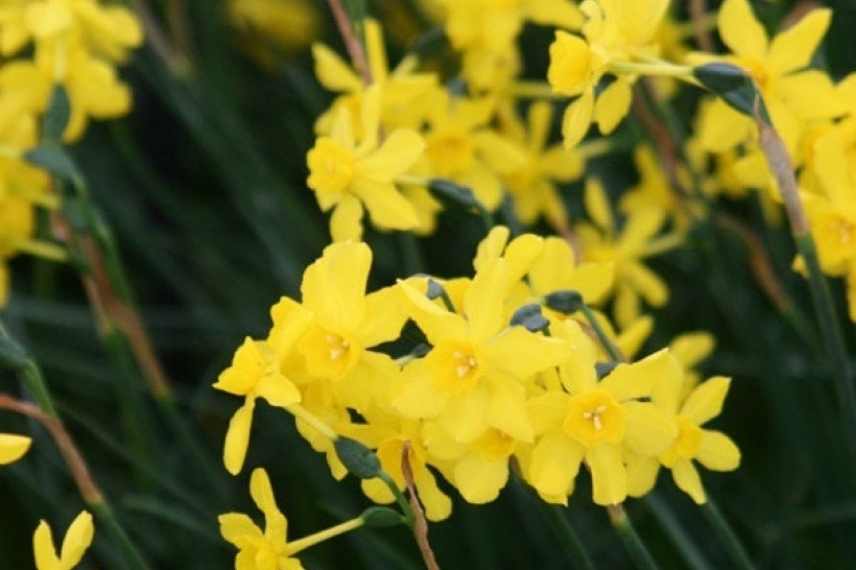
Planting and pairing narcissus ‘Twinkling Yellow’
Narcissus ‘Twinkling Yellow’ thrives in a sunny position, in well-drained, even dry soil. It is therefore perfect for use in rockeries, accompanied for example by several varieties of sedum with decorative evergreen foliage, for a modern graphic touch.
For a pleasing homogeneity in colour, plant it in massed plantings with yellow botanical tulips, such as urumiensis, the smallest tulip variety, the tulip neustruevae, a dwarf tulip with yellow‑green tones, or the tulip batalinii ‘Yellow Jewel’, with stunning iridescent yellow flowers highlighted by red stamens.
- Subscribe!
- Contents
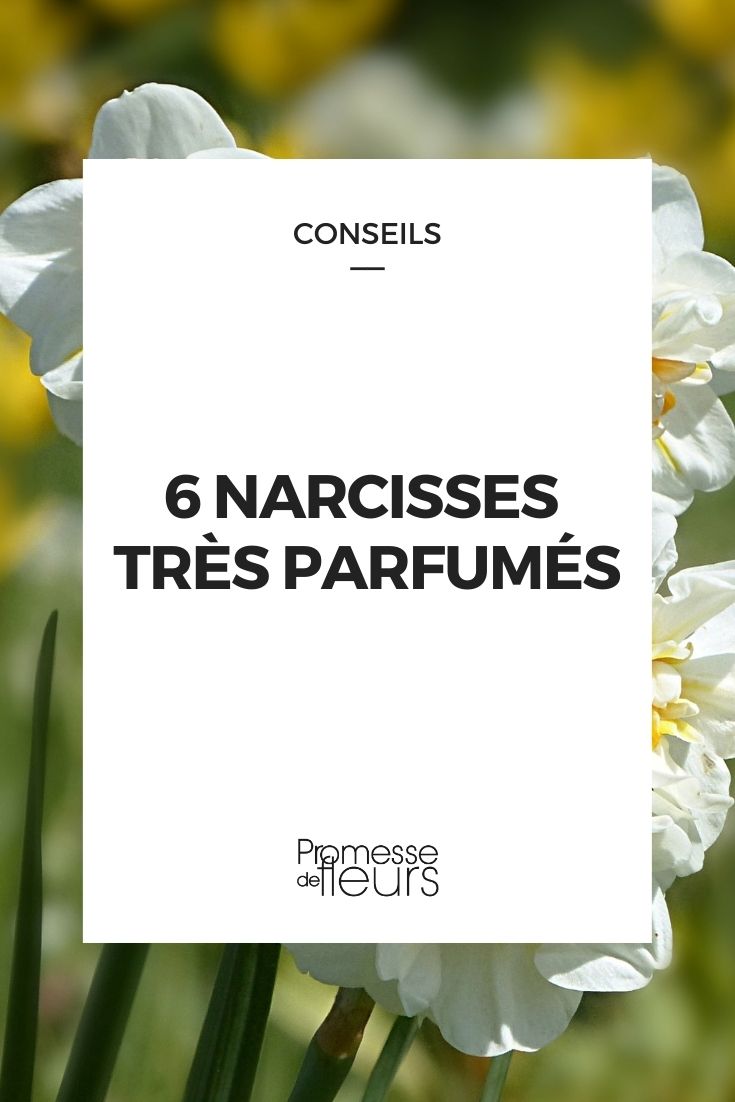































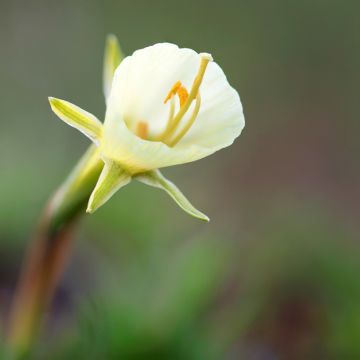
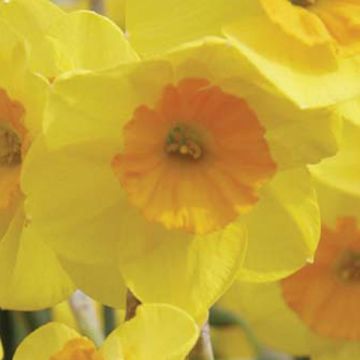
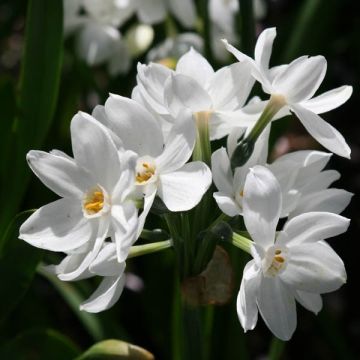
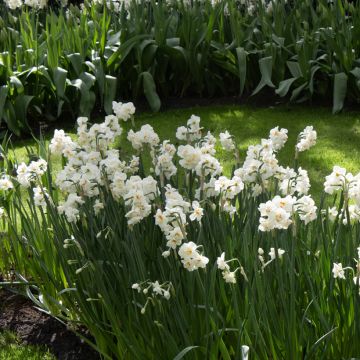
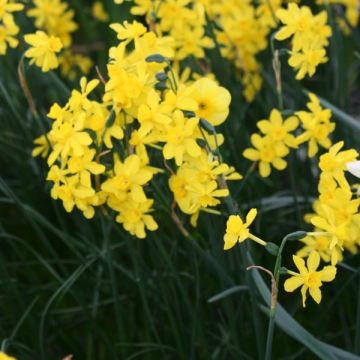
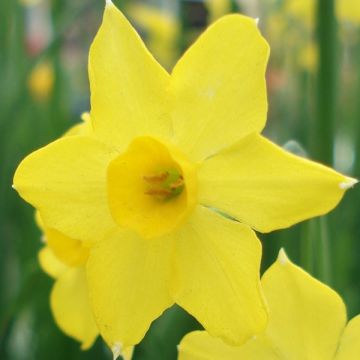
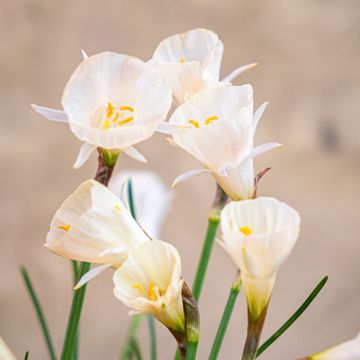
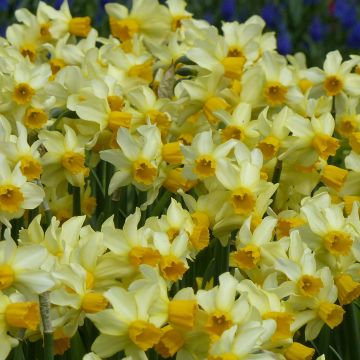
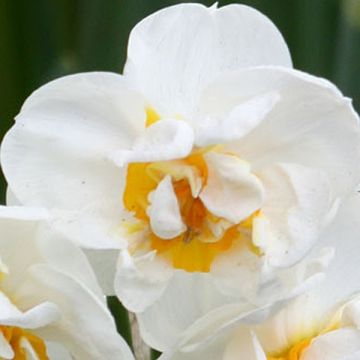
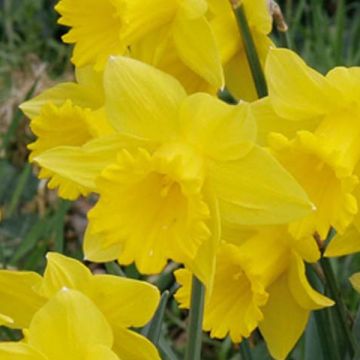
Comments